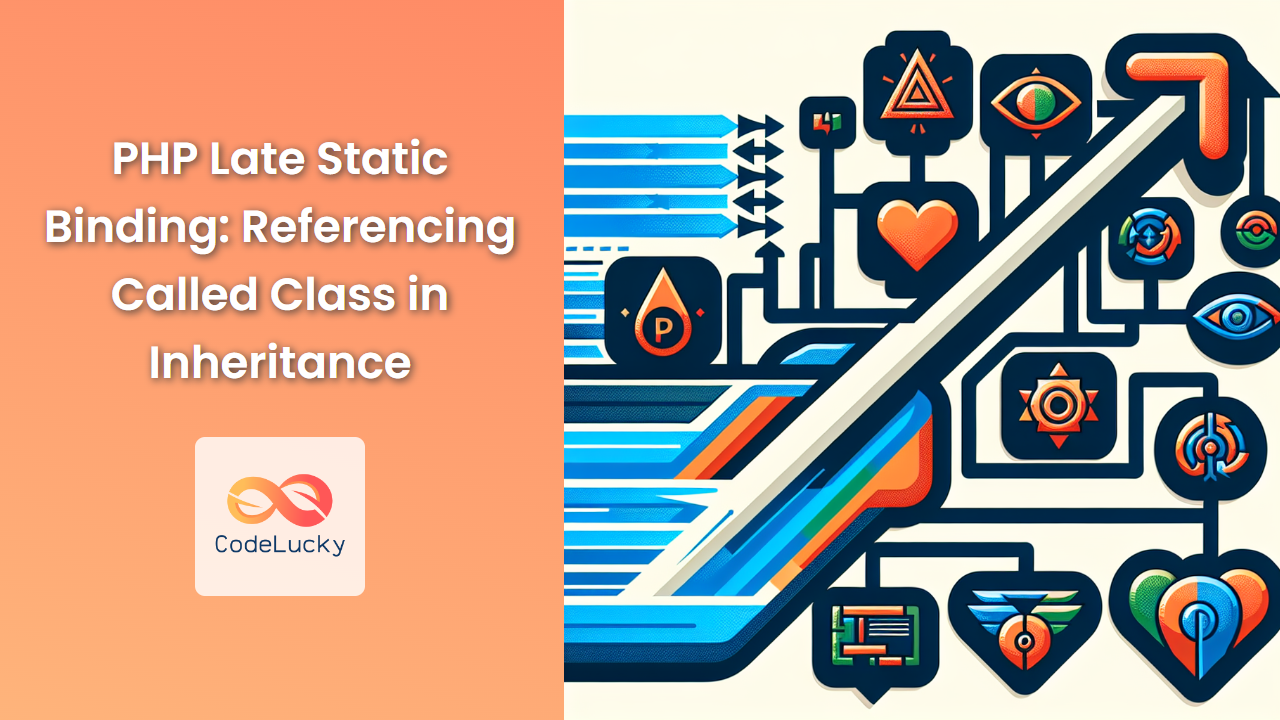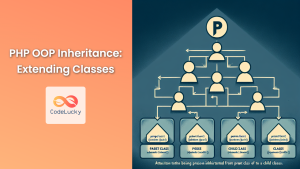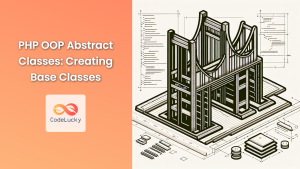PHP, a versatile server-side scripting language, has evolved significantly since its inception. One of the powerful features introduced in PHP 5.3.0 is Late Static Binding. This feature addresses a long-standing limitation in PHP’s object-oriented programming model, particularly when dealing with inheritance and static method calls. 🚀
In this comprehensive guide, we’ll dive deep into the world of Late Static Binding in PHP, exploring its intricacies, benefits, and practical applications. By the end of this article, you’ll have a solid understanding of how to leverage this feature to write more flexible and maintainable object-oriented code.
Understanding Static Binding in PHP
Before we delve into Late Static Binding, let’s refresh our understanding of static binding in PHP. Static methods and properties belong to a class rather than an instance of the class. They can be called without creating an object of the class.
Consider this simple example:
class Greeting {
public static function sayHello() {
echo "Hello from Greeting class!";
}
}
Greeting::sayHello(); // Output: Hello from Greeting class!
In this case, we’re calling the static method sayHello() directly on the Greeting class without instantiating it. This is static binding in action.
The Limitation of Static Binding
While static binding is useful, it has a significant limitation when it comes to inheritance. Let’s look at an example to illustrate this:
class Animal {
public static function getType() {
return "I am an animal";
}
public static function printType() {
echo static::getType();
}
}
class Dog extends Animal {
public static function getType() {
return "I am a dog";
}
}
Dog::printType(); // Output: I am an animal
In this example, we might expect Dog::printType() to output “I am a dog”, but it actually outputs “I am an animal”. This is because the static keyword in the printType() method refers to the class where the method is defined (Animal), not the class that called the method (Dog).
This limitation is where Late Static Binding comes to the rescue! 🦸♂️
Enter Late Static Binding
Late Static Binding introduces a new keyword, static, which can be used to reference the class that was initially called at runtime. This allows for more flexible inheritance of static methods.
Let’s modify our previous example to use Late Static Binding:
class Animal {
public static function getType() {
return "I am an animal";
}
public static function printType() {
echo static::getType();
}
}
class Dog extends Animal {
public static function getType() {
return "I am a dog";
}
}
Dog::printType(); // Output: I am a dog
Now, when we call Dog::printType(), it correctly outputs “I am a dog”. The static keyword in printType() now refers to the class that was initially called (Dog), not the class where the method is defined (Animal).
Deep Dive into Late Static Binding
Let’s explore some more complex scenarios to fully grasp the power of Late Static Binding.
Scenario 1: Multi-level Inheritance
Consider a scenario with multi-level inheritance:
class Vehicle {
protected static $type = "Generic Vehicle";
public static function getType() {
return static::$type;
}
public static function describe() {
echo "This is a " . static::getType() . "\n";
}
}
class Car extends Vehicle {
protected static $type = "Car";
}
class ElectricCar extends Car {
protected static $type = "Electric Car";
}
Vehicle::describe(); // Output: This is a Generic Vehicle
Car::describe(); // Output: This is a Car
ElectricCar::describe(); // Output: This is a Electric Car
In this example, the describe() method uses Late Static Binding to correctly reference the $type property of the class that was called, even through multiple levels of inheritance.
Scenario 2: Factory Method Pattern
Late Static Binding is particularly useful when implementing the Factory Method pattern. Here’s an example:
abstract class Logger {
protected static $logFile = 'default.log';
public static function log($message) {
$logFile = static::$logFile;
file_put_contents($logFile, $message . "\n", FILE_APPEND);
echo "Logged to " . static::$logFile . ": " . $message . "\n";
}
public static function getLogFile() {
return static::$logFile;
}
}
class UserLogger extends Logger {
protected static $logFile = 'user.log';
}
class SystemLogger extends Logger {
protected static $logFile = 'system.log';
}
Logger::log("Default log message");
UserLogger::log("User action logged");
SystemLogger::log("System event logged");
echo "Default log file: " . Logger::getLogFile() . "\n";
echo "User log file: " . UserLogger::getLogFile() . "\n";
echo "System log file: " . SystemLogger::getLogFile() . "\n";
Output:
Logged to default.log: Default log message
Logged to user.log: User action logged
Logged to system.log: System event logged
Default log file: default.log
User log file: user.log
System log file: system.log
In this example, the Logger class uses Late Static Binding to allow its subclasses to specify their own log files. The log() and getLogFile() methods correctly use the $logFile property of the called class.
The static Keyword vs self Keyword
It’s important to understand the difference between the static keyword (used for Late Static Binding) and the self keyword:
selfrefers to the current class where the keyword is used.staticrefers to the class that was initially called at runtime.
Let’s illustrate this with an example:
class ParentClass {
public static function whoAmI() {
echo "I am " . __CLASS__ . "\n";
}
public static function testSelf() {
self::whoAmI();
}
public static function testStatic() {
static::whoAmI();
}
}
class ChildClass extends ParentClass {
public static function whoAmI() {
echo "I am " . __CLASS__ . "\n";
}
}
ChildClass::testSelf(); // Output: I am ParentClass
ChildClass::testStatic(); // Output: I am ChildClass
In this example, testSelf() always calls ParentClass::whoAmI(), regardless of which class it’s called from. On the other hand, testStatic() calls whoAmI() on the class that was initially called (ChildClass in this case).
Practical Use Case: Database Connection Singleton
Let’s look at a practical use case where Late Static Binding can be beneficial. We’ll implement a database connection singleton that can be extended for different database types:
abstract class DatabaseConnection {
protected static $instance = null;
protected $connection;
protected function __construct() {
$this->connect();
}
abstract protected function connect();
public static function getInstance() {
if (static::$instance === null) {
static::$instance = new static();
}
return static::$instance;
}
public function query($sql) {
// Simulate query execution
echo "Executing query on " . get_class($this) . ": " . $sql . "\n";
}
}
class MySQLConnection extends DatabaseConnection {
protected function connect() {
$this->connection = "MySQL Connection";
echo "Connected to MySQL\n";
}
}
class PostgreSQLConnection extends DatabaseConnection {
protected function connect() {
$this->connection = "PostgreSQL Connection";
echo "Connected to PostgreSQL\n";
}
}
$mysql = MySQLConnection::getInstance();
$mysql->query("SELECT * FROM users");
$postgres = PostgreSQLConnection::getInstance();
$postgres->query("SELECT * FROM products");
$mysql2 = MySQLConnection::getInstance();
$mysql2->query("UPDATE users SET status = 'active'");
Output:
Connected to MySQL
Executing query on MySQLConnection: SELECT * FROM users
Connected to PostgreSQL
Executing query on PostgreSQLConnection: SELECT * FROM products
Executing query on MySQLConnection: UPDATE users SET status = 'active'
In this example, the DatabaseConnection class uses Late Static Binding in its getInstance() method. This allows each subclass (MySQLConnection and PostgreSQLConnection) to have its own singleton instance. The static keyword ensures that new static() creates an instance of the called class, not the base DatabaseConnection class.
Limitations and Considerations
While Late Static Binding is a powerful feature, it’s important to be aware of its limitations:
-
Performance: Late Static Binding can have a slight performance overhead compared to early binding. However, for most applications, this difference is negligible.
-
Complexity: Overuse of Late Static Binding can lead to complex and hard-to-follow code. Use it judiciously and always prioritize code readability.
-
Not for non-static contexts: Late Static Binding only works in static contexts. It cannot be used with non-static methods or properties.
-
Inheritance depth: Late Static Binding resolves to the class in the inheritance tree that was initially called, not necessarily the most derived class.
Conclusion
Late Static Binding in PHP provides a powerful way to reference the called class in inheritance scenarios. It allows for more flexible and dynamic code, especially when working with static methods and properties in inherited classes.
By using the static keyword instead of self, you can create more versatile base classes that can be extended and customized without losing their core functionality. This is particularly useful in design patterns like Factory Method or when implementing flexible logging or database connection systems.
Remember, while Late Static Binding is a valuable tool in your PHP toolkit, it’s important to use it judiciously. Always strive for clear, readable code that other developers (including your future self) can easily understand and maintain.
As you continue your PHP journey, experiment with Late Static Binding in your projects. You’ll likely find numerous scenarios where it can simplify your code and make your class hierarchies more flexible and powerful. Happy coding! 🎉👨💻👩💻



















